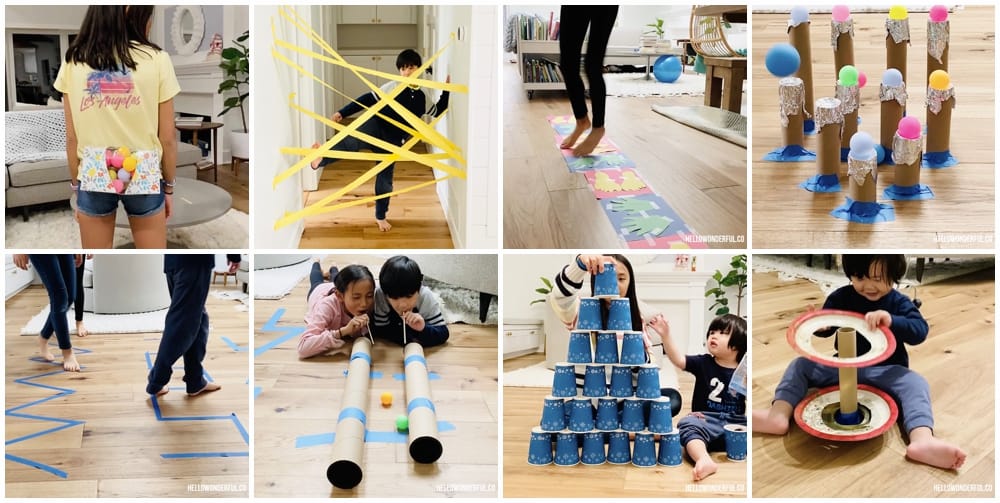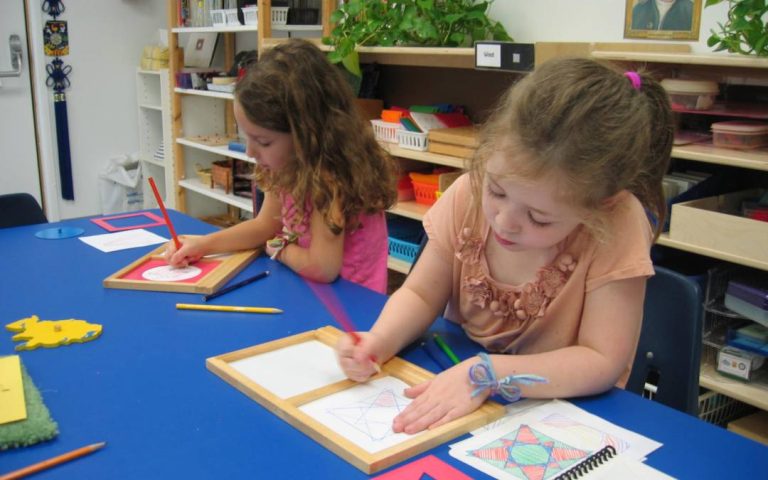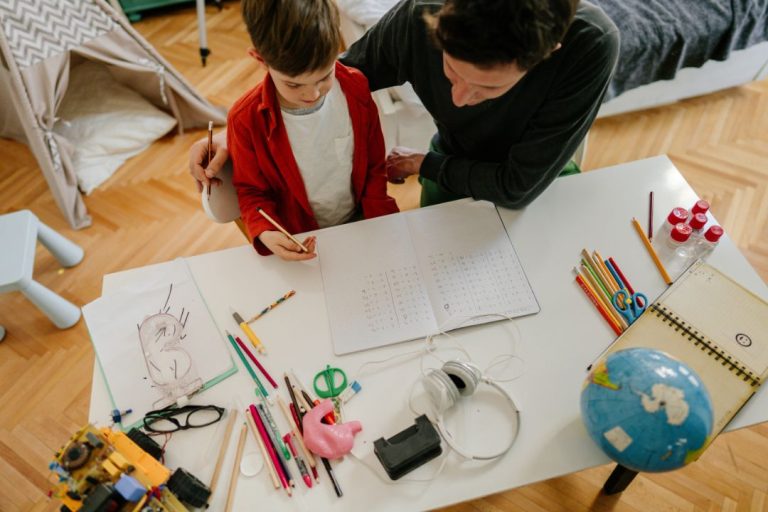House Activities for Preschoolers: Creative Fun at Home!

House activities for preschoolers enhance motor skills and creativity. They include indoor crafts, pretend play, and educational games.
Engaging preschoolers with activities at home is essential for their cognitive and physical development. These activities not only foster a fun learning environment but also help in building strong familial bonds. Creative playtime can be as simple as building a fort with blankets or as educational as sorting colors and shapes.
The key is to keep the activities varied, interactive, and tailored to their growing interests. By incorporating routine and structured house activities, parents can provide their preschoolers with a sense of security and a love for learning that paves the way for future academic success.
Indoor Adventures With Creative House Activities
Unlocking a world of fun right within your home can be a thrilling adventure for little ones. As the seasons shift and we find ourselves spending more time indoors, it becomes crucial to reinvent our living space into a vibrant hub of imagination and play for preschoolers. Indoor activities designed specifically for young minds not only keep them entertained but also fuel their creativity, growth, and learning. From make-believe castles to DIY science experiments, the possibilities are endless. Let’s explore enthralling house activities that promise a journey of discovery and delight for your preschoolers.
Designed To Stimulate Imagination And Creativity
Crafting an environment that stimulates a child’s imagination is vital for their development. Creative house activities transform ordinary afternoons into extraordinary adventures.
- Construct a cardboard fort using boxes, pillows, and sheets
- Create a miniature world with a homemade dollhouse or a DIY racetrack
- Initiate a family art project where everyone contributes to a massive collage or mural
- Engage in role-playing games where they can dress up and enact different characters and scenarios
These hands-on activities not only spark joy but also enhance fine motor skills and open a gateway to a realm where the ceiling is the sky and the carpet is a canvas for expression.
Offer Options For Individual And Group Play
Whether your child enjoys solo time or thrives in a group setting, having a mix of activities that cater to both is essential. Flexible play options nurture independence and foster social skills.
| Individual Play | Group Play |
|---|---|
| Puzzle solving | Team-building games like ‘hot potato’ |
| Reading nook adventures | Interactive storytelling sessions |
| Coloring books and art stations | Cooking and baking together |
Activities crafted for solo and group dynamics encourage children to be confident in their independence while also learning the intricate dance of cooperation and sharing. Each interaction is an avenue for growth, whether it’s deciding what color to paint the sun or how to share the cookie dough during a baking spree.
Crafting Corner For Preschool Fun
Welcome to the Crafting Corner for Preschool Fun, where little hands create big imaginations! Crafting is a brilliant way to entertain preschoolers and enhance their fine motor skills, boost their creativity, and provide them with a sense of accomplishment. Let’s dive into a tiny world of colors, shapes, and textures where every craft becomes a fun learning experience.
Introduce versatile crafting activities
Introduce Versatile Crafting Activities
Catering to curious minds, introduce a variety of crafting activities to keep preschoolers engaged and excited about art. Exploring different projects like:
- Handprint Art – Capture a moment in time with colorful handprints.
- Paper Plate Masks – Unleash their inner superhero or mystical creature.
- Collages – A creative mix of magazine cuts, stickers, and drawings.
- Nature Crafts – Use leaves, twigs, and flowers to make natural masterpieces.
- DIY Instruments – Construct simple musical instruments to find rhythm and tune.
Each activity is an open door to a world of creativity, unveiling their talents while enhancing cognitive abilities and hand-eye coordination.
Encourage safe, age-appropriate material use
Encourage Safe, Age-appropriate Material Use
While creativity knows no bounds, safety remains paramount. Use safe, non-toxic, and age-appropriate materials such as:
| Material | Description |
|---|---|
| Washable Paints | Easy to clean, reducing worry about messes. |
| Large Crayons | Perfect for small hands to grip and color with ease. |
| Child-Safe Scissors | Designed to cut paper, not fingers, for safe snipping. |
| Glue Sticks | Provide a less messy alternative to liquid glue. |
Encourage exploration and expression, but always have an adult supervise to ensure safe crafting time.
Suggest ways for displaying kids’ artwork
Suggest Ways For Displaying Kids’ Artwork
Artwork display celebrates a child’s effort and nurtures pride in their accomplishments. Transform their creations into home decor with ideas like:
- Gallery Walls – Dedicate a space to exhibit their masterpieces.
- Art Books – Compile drawings and paintings into a personalized book.
- Fridge Magnets – Display their artwork where the family gathers most.
- Art-Strings – Use string lines and clips for an interchangeable display.
Showcasing their creative output instills confidence and demonstrates the value of their artistic journey.
Unleashing Imagination Through Role-play
Preschoolers possess an ocean of creativity just waiting to surge forth, and there is no better way to tap into this potential than through role-play. This hands-on activity fosters cognitive and social development, allowing children to explore different scenarios and characters, which enhance their imaginative powers. Let’s delve into the whimsical world of role-play and discover how it can be a fun-filled educational tool.
Detailing Role-playing Scenarios And Props
Creating enthralling role-play environments for your preschooler does not require elaborate preparations. A scenario as simple as a grocery store or a doctor’s office can provide invaluable learning experiences. To get started, here are a few role-play ideas:
- Pirate Adventure: Use a cardboard box as a ship, a towel for a sail, and a paper towel tube for a telescope.
- Space Mission: Transform a play tent into a spacecraft with aluminum foil antennae and mission control drawn on poster board.
- Restaurant: Create menus, use play food, and set a small table for a dining experience.
- Post Office: Make mailboxes from shoeboxes and craft letters and stamps for delivery.
- Supermarket: Line up canned goods as merchandise, and a toy cash register can serve as the checkout.
Everyday items can double as props, sparking extraordinary adventures from the comforts of home.
Highlighting The Benefits Of Imaginative Role-play
Imaginative role-play is not merely a pastime; it’s a crucial educational tool. Engaging in role-play activities helps preschoolers to:
- Develop language and communication skills as they mimic conversations and vocabulary relevant to their chosen roles.
- Enhance social skills by cooperating with peers, taking turns, and resolving conflicts.
- Build empathy through understanding and expressing the emotions and perspectives of different characters.
- Strengthen problem-solving abilities as they navigate through various scenarios and outcomes.
- Cultivate emotional recognition and regulation by exploring a range of feelings and reactions within a safe play environment.
The benefits continue beyond the play session, with these skills transferring to real-world interactions and academic success.

Storytime Sessions Indoors
Transform your living room into a whimsical land of literary adventure with Storytime Sessions Indoors, a perfect way to spark a love for reading in preschoolers. Not only do these sessions promote listening and comprehension skills, but they also bring stories to life, making reading a memorable experience. Let’s explore how to make indoor storytime both enchanting and educational.
Incorporate Book Reading With Interactive Elements
One of the keys to a successful storytime is to engage children with interactive elements. Here’s how:
- Use voices for different characters to keep the narrative exciting.
- Include songs or rhymes related to the story to involve kids actively.
- Prompt questions throughout to encourage participation and critical thinking.
- Have some props or pictures handy to illustrate parts of the story vividly.
- End with a relatable activity, such as a craft or drawing session, that ties in with the reading material.
Explain Methods To Create A Captivating Story Environment
To ensure children are fully immersed in the story, a captivating environment is essential. Achieve this by:
- Setting the scene with themed decorations that coincide with the book’s setting.
- Minimizing distractions by turning off electronic devices not in use.
- Using a spacious area where children can sit comfortably and still see the book.
- Dimming lights and using a lamp or flashlight for a cozy atmosphere.
- Invite children to bring their favorite blankets or stuffed animals to create a personal touch.
Musical Exploration For Energetic Preschoolers
Ignite the spark of creativity in young minds with musical exploration! Music isn’t just a form of art—it’s a playground for preschoolers’ burgeoning imaginations and boundless energy. Engaging in musical activities offers a symphony of benefits such as enhancing cognitive development, improving motor skills, and introducing rhythm and coordination in a fun way. Let’s dive into the world of beats and melodies with these stimulating activities tailored for the little maestros.
Present Ideas For Homemade Musical Instruments
Creating homemade musical instruments is a harmonious blend of craft time and music class. Here are some ideas to start your own band:
- Drum Set: Repurpose old containers and boxes. Add rubber bands for snares and use wooden spoons as drumsticks.
- Rainmaker: Fill a cardboard tube with rice or beans. Seal the ends and decorate for instant percussion.
- Guitar: Stretch rubber bands around a shoebox for a simple string instrument your child can strum along to.
- Shakers: Seal beans or beads in plastic bottles. Decorate with colorful tape and stickers for personalized flair.
Outline Simple, Engaging Music Activities
Simple music activities can set the stage for a lifetime love of music. These activities can help children to connect sounds with movement, explore different rhythms, and develop their listening skills:
- Music and Movement: Play a variety of songs and encourage the children to move their bodies to the beat. Whether it’s stomping like an elephant or fluttering like a butterfly, let them feel the music.
- Conducting the Orchestra: Let your preschooler be the maestro! They can direct when the family orchestra starts and stops playing, fast or slow.
- Matching Game: Play a few notes on an instrument or use a musical app, and ask the children to match the sound or rhythm with another instrument.
- Sing-Along Sessions: Classic nursery rhymes or simple songs with repetitive verses are great for sing-alongs. Include actions for an added layer of fun.
House Activities For Preschoolers: Kitchen Science
Transform your kitchen into a laboratory of wonder and discovery with kitchen science activities for preschoolers. This is where everyday items become the tools for learning and exploration. Engaging young minds in simple yet captivating experiments can lay the foundation for a lifelong interest in science. Kitchen science is not only enjoyable; it’s also a fantastic opportunity to bond with your little ones while teaching them valuable concepts. Let’s delve into some fun, safe experiments and discuss the essential learning outcomes alongside safety tips.
Share Fun, Safe Experiments Using Kitchen Items
- Magic Milk: Combine milk, food coloring, and a drop of dish soap to witness a burst of color that will captivate any preschooler.
- Baking Soda and Vinegar Volcano: Create an erupting volcano with baking soda, vinegar, and a dash of food coloring – witness the fizzy reaction and learn about acid-base reactions.
- Citrus Volcanoes: Use a halved lemon or orange, add a little baking soda, and watch the citric acid create a bubbly reaction.
- Invisible Ink: Lemon juice and a heat source reveal secret messages, teaching kids about oxidation.
Discuss Learning Outcomes And Safety Tips
Kitchen science for preschoolers offers a rich tapestry of learning opportunities that touch on chemistry, physics, and natural science. These experiments enhance critical thinking, promote curiosity, and improve fine motor skills. For instance, measuring liquids for a recipe introduces the concept of quantities, while observing reactions helps children grasp cause and effect.
Ensuring safety during these experiments is paramount. Here are a few tips to consider:
- Always supervise children closely during kitchen science activities.
- Use non-toxic, food-grade ingredients to reduce the risk of allergic reactions or ingestion.
- Explain the importance of not touching their face or eyes during experiments.
- Keep a clean workstation to prevent spills and contamination.
- Teach children to clean up after their experiments to instill responsibility and order.
Frequently Asked Questions Of House Activities For Preschoolers
What Are Top Indoor Activities For Preschoolers?
Indoor scavenger hunts encourage exploration and problem-solving. Crafting sessions unleash creativity and fine motor skill enhancement. Simple baking projects introduce basic math and science concepts, as well as reward patience with a delicious outcome.
How To Keep Preschoolers Active At Home?
Create obstacle courses using cushions and toys for physical play. Dance parties with fun music improve coordination and burn energy. Interactive games like Simon Says promote listening skills and quick responses, keeping young children engaged and moving.
Which Educational Games Are Best For Preschoolers?
Educational board games focusing on counting and color recognition are excellent. Puzzles help with cognitive development and shape recognition. Memory games boost retention and recall abilities, making them perfect for preschool learning.
Are Diy Crafts Suitable For Preschool Kids?
DIY crafts are ideal for preschoolers. They inspire creativity and improve hand-eye coordination. Simple projects that involve gluing, cutting with safety scissors, and painting are enjoyable and educational.
Conclusion
Engaging preschoolers with fun house activities is key to their growth and learning journey. Creative playtime not only keeps them entertained but also sharpens their skills. Remember, each moment spent on these activities is an investment in your child’s development.
So pick a few ideas from this list and start the adventure!

Emily specializes in integrating arts into early childhood education. She believes in fostering creativity and imagination through music, art, and drama activities.







One Comment